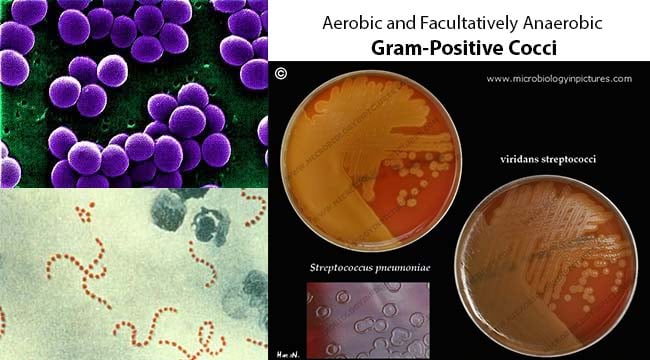Interesting Science Videos
Enterococcus faecalis and Enterococcus faecium
Clinical Features
Urinary tract infections, peritonitis, bacteremia, endocarditis
Virulence Factors
Relatively avirulent

Staphylococcus aureus
Clinical Features
Suppurative infections: impetigo, folliculitis, furuncles, carbuncles, wounds
Disseminated infections: bacteremia, endocarditis, pneumonia, empyema, osteomyelitis, septic arthritis
Toxin-mediated infections: toxic shock syndrome, scalded skin syndrome, food poisoning
Virulence Factors
Possess thick peptidoglycan layer, capsule, protein A, various toxins (cytotoxins, exfoliative toxins, enterotoxins, toxic shock syndrome toxin, Panton- Valentine leukocidin) and hydrolytic enzymes
Staphylococcus, coagulase-negative
Clinical Features
Wound infections, urinary tract infections, catheter and shunt infections, prosthetic device infections
Virulence Factors
Possess thick peptidoglycan layer and loose polysaccharide slime layer; Staphylococcus saprophyticus
produces high concentrations of urease
Streptococcus pyogenes (group A)
Clinical Features
Suppurative infections: pharyngitis, scarlet fever, sinusitis, skin and softtissue infection (impetigo,
erysipelas, cellulitis, necrotizing fasciitis), toxic shock–like syndrome; bacteremia
Nonsuppurative infections: rheumatic fever, glomerulonephritis
Virulence Factors
Capsule, M protein, M-like protein, F protein, pyrogenic exotoxins, streptolysin S and O, streptokinase,
deoxyribonuclease, C5a peptidase
Streptococcus agalactiae (group B)
Clinical Features
Neonatal disease (early onset, late onset): bacteremia, pneumonia, meningitis; postpartum endometritis, wound infection, skin and soft-tissue infection, urinary tract infections, pneumonia
Virulence Factors
Similar to group A but no capsule
Viridans streptococci
Clinical Features
Abscess formation; septicemia in neutropenic patients; subacute endocarditis; odontogenic infections; dental caries
Virulence Factors
Relatively avirulent
Streptococcus pneumoniae
Clinical Features
Pneumonia, sinusitis, otitis media, meningitis, bacteremia, endocarditis, spontaneous bacterial peritonitis, septic arthritis
Virulence Factors
Polysaccharide capsule; teichoic acid; immunoglobulin A protease; pneumolysin O

Thank you free much
nice website, thanks for sharing this article for us..
Thank you so much
nice website, success for the next article 🙂
your posts are very helpful sir